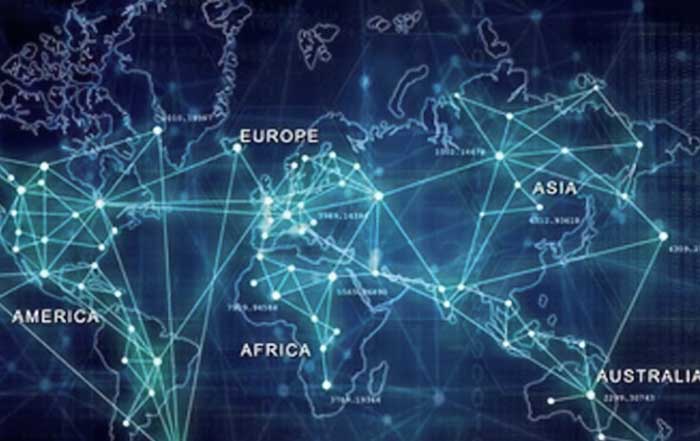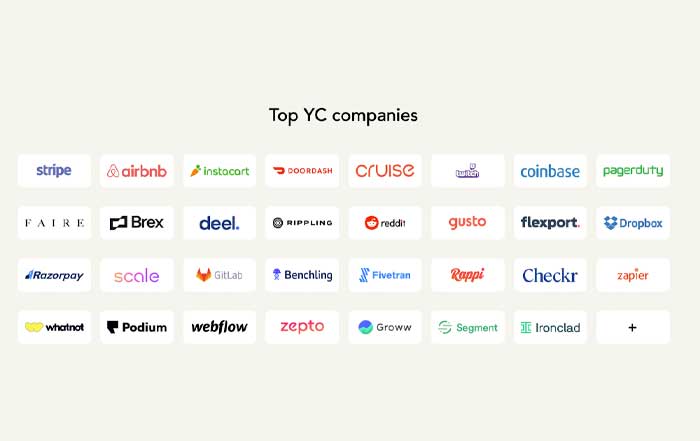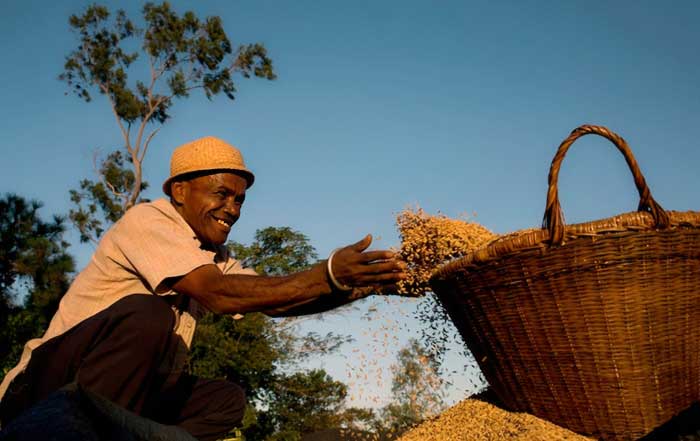Modern marketing practices have undergone profound transformation, accelerated by advanced innovations in artificial intelligence (AI) and machine learning. Organizations around the world are tapping into new AI-driven methods to understand their customers, optimize their marketing spend, and predict shifts in consumer behaviors. The year 2025 has seen an even greater surge in the use of intelligent systems that automate what was previously done by intuition or mere historical analysis. As a result, data-driven marketing strategies have become the cornerstone of success, pushing businesses to embrace AI in a more holistic manner. This strategic shift is no longer perceived as optional; leaders across industries regard AI integration as a crucial element that can differentiate forward-thinking companies from those clinging to legacy approaches.
The global competitive environment has intensified the need for targeted campaigns. Traditional advertising channels and generic promotions no longer suffice for audiences expecting real-time, personalized experiences. AI-driven marketing models are reducing guesswork and delivering data-backed recommendations, enabling marketers to target the right customer with the right message at the right moment. Contemporary marketing teams are increasingly adopting new analytical techniques that leverage neural networks, natural language processing (NLP), and deep learning, effectively boosting conversion rates and customer satisfaction. Brands are striving to stand out in a crowded marketplace, focusing on establishing meaningful connections rather than relying solely on broad-scale, one-size-fits-all tactics.
Marketing professionals recognize the strategic importance of AI tools, taking advantage of predictive insights, content-generation capabilities, automated lead nurturing, and decision-making algorithms. As a result, budget allocations toward AI solutions have soared, with companies funneling resources into research, development, and integration initiatives. Third-party technology providers and in-house data science teams are collaborating closely, sharing knowledge, and combining expertise to develop cutting-edge solutions that meet the evolving needs of marketing departments worldwide. From sophisticated data mining to real-time analytics, the new paradigm of AI-powered marketing is reshaping how corporations design, implement, and measure campaigns.
Emerging AI Tools and Techniques
Technological advancements in AI are empowering marketing teams to make sense of complex datasets in a fraction of the time previously required. Machine learning platforms have become more accessible, with user-friendly interfaces that allow individuals without coding expertise to build predictive models and visualize trends. Deep neural networks continue to grow more adept at extracting insights from unstructured information, such as text, images, and audio clips. Marketing specialists in 2025 are more capable of transforming large data repositories into actionable intelligence.
Automated tagging and sentiment analysis have gained particular traction, enabling efficient categorization and interpretation of social media content, product reviews, and customer feedback. Advanced NLP techniques can identify subtle nuances in consumer opinions, giving marketers a clearer picture of emerging preferences. Furthermore, the ability to handle multiple languages has drastically expanded the global reach of AI-driven marketing solutions, making it easier for businesses to scale their campaigns across various regions without losing local relevance. Meanwhile, content generation is benefiting from the emergence of large language models that craft compelling marketing copy, blog posts, and even email newsletters with consistent brand voice and style.
Organizations looking to stay on the cutting edge are integrating AI-driven recommendation engines into their websites, mobile apps, and e-commerce platforms. By analyzing individual browsing habits, transaction histories, and real-time behavior, these engines can serve personalized product suggestions and promotions that resonate with the target audience. AI-enabled systems are also adept at dynamic pricing, factoring in variables such as seasonality, current inventory levels, and competitive actions, allowing businesses to adjust prices for maximum profitability. With each passing month, fresh breakthroughs in AI research are finding their way into marketing solutions, motivating professionals to continually explore novel methods of reaching and engaging consumers.
Personalized Customer Experiences
Personalization has emerged as a crucial aspect of modern marketing, and AI is at the forefront of creating experiences tailored to each customer's unique preferences and behaviors. Advanced algorithms go beyond mere demographic segmentation, examining granular data points like browsing history, time spent on various sections of a website, or items left in a virtual cart. By interpreting this wealth of information in real time, AI tools can serve hyper-relevant content, product recommendations, and even specialized promotions.
Marketers utilizing personalization gain a competitive edge by addressing the individual's immediate needs while nurturing long-term brand loyalty. AI-driven email campaigns, for instance, are carefully targeted, ensuring that subscribers receive messages relevant to their interests and browsing habits. Dynamic web elements adjust to the user's behavior, presenting recommendations that feel intuitive and tailored. This level of customization fosters a sense of personal connection between brand and consumer, resulting in improved click-through rates, higher conversion metrics, and more positive brand sentiment.
Behavioral triggers play a major role in personalization as well. If a user repeatedly visits a product page but does not complete a purchase, AI systems can automatically generate reminders or offer limited-time discounts. This approach reduces cart abandonment and accelerates the final purchase decision. Advanced personalization systems often employ machine learning models that evolve over time, continually refining their capacity to predict what each consumer segment wants and needs. The outcome is an optimized customer journey that feels seamless at every touchpoint.
Predictive Analytics for Demand Forecasting
Many organizations in 2025 rely on predictive analytics to align their marketing strategies with anticipated market shifts. Enterprises that once relied on historical data analysis for demand forecasting have discovered the benefits of employing AI to predict future buying patterns more accurately. These forecasts are vital for fine-tuning production schedules, inventory management, and resource allocation. Rather than overstocking items that might not sell, companies use AI-driven insights to keep the right amount of inventory, thereby improving profitability and ensuring that resources are directed toward what will likely be the most sought-after products.
AI-driven models process a wealth of data, including past sales, macroeconomic indicators, competitor moves, and emerging trends within digital platforms. Techniques like time-series analysis have proven useful in capturing seasonality and cyclical patterns, while advanced regression methods account for complex interactions among diverse factors. With the aid of machine learning, businesses can identify subtle shifts in demand far sooner than traditional analytic methods allow. These accurate forecasts empower marketing teams to align campaigns around the availability of high-demand items, thereby crafting effective messaging that resonates with buyers at precisely the right time.
The impact of predictive analytics on corporate decision-making extends beyond demand forecasting. In some cases, AI solutions are integrated across various departments—marketing, finance, and supply chain—to share real-time insights on shifting consumer preferences, changes in competitive landscapes, and potential disruptions in logistics channels. This cross-departmental collaboration translates into cohesive strategies that optimize both the marketing narrative and the underlying operational processes. Businesses that master predictive analytics gain the agility to respond promptly to new developments, maintaining a competitive edge in volatile marketplaces.
Automated Marketing Campaigns and Customer Journeys
Automation in marketing has come a long way, from basic email workflows to sophisticated customer journey orchestration. AI tools in 2025 are handling more than just repetitive tasks; they are analyzing data points throughout the entire buyer’s journey to optimize timing, message content, and channel selection. Modern marketing suites can interpret subtle signals—such as the length of time a user hovers over certain website elements or which blog posts a visitor reads thoroughly—to gauge the individual’s readiness to purchase. Based on that intelligence, automated systems can deliver a timely push notification, chatbot prompt, or targeted email that addresses the specific stage of the funnel.
A growing number of platforms offer end-to-end automation features, integrating social media, email marketing, and other digital channels into a unified view of campaign performance. Dynamic lead scoring systems use AI-driven algorithms to determine when a lead is primed for conversion, passing them seamlessly to sales teams or prompting additional nurturing, depending on the scenario. Detailed behavioral segmentation enables marketers to craft hyper-specific workflows that respond precisely to the triggers set off by user actions. This level of automation simplifies complex operations, freeing marketers to focus on strategic tasks such as refining brand narrative and building new audience segments.
Customer experience benefits significantly from these automated workflows. Rather than receiving generic promotions or irrelevant messaging, prospective buyers encounter timely, context-rich communications that reflect genuine awareness of their interests. This approach nurtures trust, as consumers sense that the brand understands their journey and is ready to assist without being intrusive. AI-driven campaign orchestration helps marketers avoid under- or over-communicating, striking the right balance between maintaining brand presence and providing meaningful interactions.
Chatbots and Virtual Assistants
The proliferation of chatbots and virtual assistants demonstrates how far AI has come in replicating natural, conversational exchanges. These tools serve as the first point of contact for many consumers, offering immediate responses to product inquiries, troubleshooting steps, or basic account assistance. The integration of NLP allows these interfaces to understand nuanced queries, interpret emotional indicators, and provide relevant, context-aware solutions.
For businesses operating in multiple countries or regions, multilingual chatbots offer the flexibility to serve diverse audiences without significant human resource investments. The technology’s ability to escalate complex requests to a human agent ensures that queries requiring deeper expertise receive attention, while routine questions are resolved by the AI-driven system. Over time, advanced learning algorithms refine chatbot responses by analyzing user satisfaction, conversation length, and resolution rates. The data gleaned from these interactions offer marketers deeper insights into the specific pain points or challenges customers face, enabling continuous improvement in overall service delivery.
Virtual assistants, which can be integrated into mobile apps or messaging platforms, often function as personalized guides that recommend products, track orders, and even set reminders for upcoming sales events. These interfaces can leverage a user’s data to tailor content, resulting in a high level of convenience and satisfaction. As a result, the presence of AI-driven conversational solutions increases operational efficiency and gives businesses a valuable new channel for building trust and loyalty among customers who appreciate instant, frictionless service.
The Emergence of Synthetic Media
Synthetic media—audio, video, and visual content generated or manipulated by AI—has emerged as a growing trend in marketing. Technology capable of producing lifelike images, voices, or entire video sequences at scale can drastically reduce the time and expense required to create marketing campaigns. Marketers can produce hyper-personalized video ads that address viewers by name, reference local events, or tailor content to a specific demographic segment. This capability enables deeper audience engagement, as creative teams are no longer constrained by the logistical challenges of filming and editing large-scale productions.
However, the application of synthetic media in marketing demands careful attention to ethical boundaries. Misuse of digitally generated content carries the risk of damaging brand credibility or violating consumer trust. In 2025, regulatory bodies across various jurisdictions are discussing guidelines around the transparent labeling of AI-generated content. The responsible use of synthetic media often involves ensuring that viewers are not deceived about the origin of the material they are consuming, along with obtaining appropriate consent when real people’s images or voices are used.
When used ethically, synthetic media holds promise for elevating the creativity of modern marketing initiatives. Marketers can craft immersive, interactive experiences that feel highly authentic and relevant, capturing audience interest more effectively than static or generic campaigns. As artificial intelligence continues to evolve, the potential for real-time, data-driven content creation grows, enabling marketing teams to adapt their storytelling on the fly based on consumer reactions and preferences. This agile content creation process can help brands maintain a dynamic dialogue with their audience, moving well beyond traditional one-sided advertising.
Ethical and Legal Considerations
The rapid rise of AI in marketing has triggered important discussions about how customer data is collected, stored, and used. Regulations worldwide have become more stringent, addressing concerns about data privacy, algorithmic bias, and transparency in automated decision-making. Businesses are now expected to demonstrate compliance with regulations that require explicit consent for data gathering and robust safeguards for protecting sensitive information. Marketers operating AI tools must adopt governance frameworks that ensure ethical use of consumer data, bolstering accountability at every stage of the pipeline.
Algorithmic bias represents a particularly thorny challenge. AI systems can unwittingly perpetuate discrimination if trained on datasets lacking in diversity or representative fairness. For example, marketing campaigns focused on financial services could inadvertently exclude viable customers if the training data contains skewed representations of income brackets or credit scores. Businesses have responded by conducting thorough audits of their AI systems, working with specialized data scientists and diversity consultants to uncover and rectify biases in both data and algorithms.
Transparency in AI operations is gradually becoming an industry standard. Marketers are increasingly disclosing when a recommendation, dynamic price adjustment, or promotional offer stems from an AI-driven process. This openness not only meets regulatory requirements but also builds consumer trust. While some organizations fear that revealing the use of AI might discourage consumers, research suggests that most individuals appreciate the consistency and personalized benefits, provided there is clarity about how their data is used. Over time, creating a culture of ethical AI deployment can differentiate a brand positively, demonstrating a commitment to responsible innovation that prioritizes long-term relationships over short-term gains.
Integrating AI with Existing Systems
While AI delivers substantial value, successful integration with existing infrastructures can be complex. Legacy systems often lack the capacity to handle massive volumes of real-time data or to interoperate seamlessly with modern machine learning tools. In 2025, one of the primary challenges is bridging this gap through architectural updates, application programming interfaces (APIs), and enterprise data warehousing solutions. Collaboration between marketing departments, IT divisions, and external technology vendors is vital to ensure that these integrations proceed smoothly and deliver the desired outcomes.
Many organizations have found that establishing centralized data lakes can help unify disparate data sources, paving the way for consistent analysis and the creation of robust machine learning models. By consolidating information from CRM systems, e-commerce platforms, social media, and offline transactions, marketers gain a holistic view of customer behavior. AI systems can then apply advanced analytics to this aggregated dataset, revealing patterns and insights that might remain hidden within isolated silos. Some businesses also invest in data engineering services to clean and structure the information in a manner that is optimized for machine learning algorithms, improving model performance and reliability.
Establishing cross-functional teams has proven an effective approach to fostering collaboration. Data scientists, IT architects, and marketing strategists work in tandem to identify specific use cases, develop proof-of-concept models, and iterate upon them to refine their accuracy. This cycle of continuous improvement depends on open communication and shared objectives. A thorough rollout plan typically includes employee training, pilot programs, and phased migrations. By following this incremental approach, organizations can mitigate risks, evaluate AI’s tangible impact on key performance indicators, and refine their integrations for maximum efficiency.
Measuring the Impact of AI-Driven Marketing
As AI-driven marketing initiatives mature, evaluating return on investment (ROI) and overall impact becomes a high priority. Traditional marketing metrics like click-through rates, impressions, and conversions still hold relevance, but they are often augmented by newer, AI-specific measures. These include the accuracy of prediction models, speed of personalization, or improvements in dynamic pricing efficiency. Quantifying the value of AI requires a comprehensive framework that aligns technical performance indicators with business objectives, ensuring that AI projects do not remain siloed in data science teams without delivering tangible outcomes.
Multi-touch attribution models leverage AI to parse out how each channel or campaign contributes to conversion events, providing a holistic perspective on marketing effectiveness. By analyzing customer journeys and correlating specific touchpoints with eventual conversions, companies gain clarity on where to allocate budgets and how to optimize campaign sequences. AI-driven attribution can handle vast, complex datasets that traditional models cannot, reducing guesswork and enabling data-backed decisions.
Beyond conventional performance measurements, businesses are also tracking customer satisfaction metrics. Surveys, net promoter scores, and even social media sentiment can be integrated into AI dashboards for near real-time feedback on brand perception. By systematically analyzing this data, marketers can identify early warning signals of dissatisfaction or brand fatigue, enabling rapid remedial actions. Over time, these continuous feedback loops create a cycle of iterative improvement, where marketing strategies evolve based on concrete insights rather than assumptions or outdated reports.
Industry-Specific Applications
AI-driven marketing strategies can be adapted to the unique needs of various industries, underscoring the versatility of this technology. In the automotive sector, manufacturers utilize AI to forecast demand for specific models and optimize their dealership networks accordingly. By analyzing consumer preferences and vehicle usage data, automotive brands deliver personalized offers for related services such as maintenance, vehicle financing, or extended warranties. Similarly, the retail industry leverages AI recommendations for inventory management, targeted promotions, and personalized product catalogs, ensuring that each shopper’s experience is as relevant and seamless as possible.
Financial institutions benefit from AI-driven marketing by identifying cross-selling opportunities for products like mortgages, credit cards, or investment services. Algorithms capable of analyzing financial history, life stage data, and even social media cues can help banks present tailored solutions that are both timely and valuable for the customer. Meanwhile, healthcare organizations rely on AI to deliver educational content and patient reminders, ensuring that individuals receive relevant messages about preventive care or specialized treatments. This personalized approach to healthcare marketing not only improves patient engagement but can also lead to better health outcomes when people receive the right information at the right moment.
The travel and hospitality industry uses AI to enrich customer journeys, from pre-trip research to post-trip follow-ups. Recommendation engines tailor travel packages based on past booking patterns and user demographics, while chatbots offer immediate assistance with itinerary changes or local destination tips. By analyzing traveler feedback, including online reviews and social media posts, hotels and airlines can refine their offerings, address service bottlenecks, and target promotions more effectively. These industry-specific applications underscore how AI’s versatility positions it as a transformative force across diverse market segments.
Adapting Organizational Culture for AI
Successful integration of AI into marketing strategies requires more than new software or analytics capabilities; it demands a shift in organizational culture. Marketers and executives in 2025 recognize that sustainable AI adoption hinges on fostering a data-driven mindset throughout all levels of the company. This mindset encourages employees to appreciate data as a critical asset, motivating them to continuously seek insights and challenge established assumptions.
C-suite leadership often drives the transformation by advocating for AI-led initiatives and allocating resources to implement them. Organizational structures may shift, with some businesses creating dedicated AI centers of excellence that collaborate with marketing, sales, and product development teams. Training programs and internal workshops enable employees to become more proficient in interpreting data outputs and leveraging AI-driven tools in their daily responsibilities. A culture that promotes experimentation—where failures are treated as learning experiences—can catalyze innovation and accelerate AI’s positive impact on marketing outcomes.
Companies that embrace a culture of continuous learning often integrate AI competencies into their talent management strategies, from recruitment to ongoing professional development. They may look for marketing professionals who combine creativity with analytical thinking, or data scientists who have strong communication and collaboration skills. Internal knowledge-sharing networks and online platforms facilitate the exchange of best practices, lessons learned, and success stories, ensuring that AI expertise is not confined to a small group of specialists. Over time, this inclusive approach paves the way for more holistic, enterprise-wide AI adoption.
Building Trust Through Transparency
Trust remains an essential element in the relationship between brands and consumers, especially as AI-driven marketing becomes more pervasive. Consumers may hesitate to share personal data if they are not confident that it will be used responsibly. Brands in 2025 have found that clear, straightforward communication about data usage helps alleviate concerns. Detailed privacy statements, explicit consent forms, and interactive dashboards displaying what information has been collected are just a few tactics businesses use to maintain transparency.
AI-driven personalization can be employed in ways that feel either helpful or invasive, depending on the consumer’s perception of how their data is being gathered. Brands that excel in building trust often prioritize user autonomy, providing options for customers to opt out of certain data collection or limit the types of recommendations they receive. This user-centric design signals respect for individual preferences and boundaries, contributing to a more positive brand relationship.
Regular audits and third-party assessments of AI systems are becoming standard practice to reassure customers that algorithms are functioning correctly and ethically. By publishing the results of these audits in accessible formats, brands further strengthen consumer confidence. Some companies also utilize “explainable AI” technologies that outline the reasons behind specific recommendations or pricing adjustments. Although not every consumer will require such levels of detail, making this information readily available demonstrates a commitment to ethical transparency.
What is your primary business objective?
What is your preferred regulatory environment?
Leveraging Social Media Insights
Social media platforms continue to play a pivotal role in marketing strategies, and AI has further enhanced the ability to tap into this valuable communication channel. Sentiment analysis algorithms examine social chatter to gauge public opinion on products, campaigns, or trends in near real time. Data gathered from platforms such as Twitter, LinkedIn, and Instagram reveals not only how consumers feel but also why they feel that way, shedding light on emotional triggers that can impact brand perception. Marketers can then quickly adapt their messaging or introduce new offers that align with current sentiment.
Influencer marketing has also evolved under AI’s influence. Businesses employ AI-driven solutions to identify influencers who align with their target demographic and brand values. By analyzing metrics like audience engagement, follower demographics, and historical campaign performance, marketers can make data-backed decisions about which influencers will yield the highest return on investment. AI can even track the performance of an influencer campaign in real time, offering marketers immediate feedback on whether the collaboration resonates with the intended audience.
Furthermore, social listening tools powered by AI go beyond monitoring brand mentions or relevant hashtags. These tools detect emerging trends, competitor movements, and external events that could affect marketing strategies. By maintaining a constant pulse on the social media environment, brands have the agility to capitalize on viral moments or mitigate potential risks before they escalate. This level of responsiveness is particularly critical in industries prone to rapid shifts or public scrutiny.
Crafting High-Impact Content with AI
Content creation has always been a linchpin in marketing efforts, and AI is now reshaping how content is conceived, produced, and delivered. Companies utilize advanced language models to generate draft copies of blog posts, video scripts, or social media content. While human editors and creative teams still provide final oversight, AI-driven writing tools accelerate the initial stages of brainstorming and composition, saving both time and resources. This streamlined workflow enables organizations to push out content faster, ensuring that they remain relevant in dynamic markets where trends can shift quickly.
AI’s ability to analyze large sets of historical data helps content creators identify topics that have traditionally resonated with specific audiences. By dissecting engagement metrics—likes, shares, comments—and correlating them with theme, length, or style, AI tools present data-driven recommendations for future content strategies. This eliminates guesswork, leading to more focused efforts where each piece of content has a clear purpose and target demographic. Keyword analysis and SEO optimization also benefit from AI, as algorithms can track search volume and competition levels more accurately than traditional keyword research tools.
Video content, which has risen to prominence in many marketing strategies, can be optimized through AI-based editing tools that suggest cuts, transitions, or visual overlays based on audience preferences. Some systems even leverage computer vision to identify key objects or scenes that are likely to engage viewers, guiding editors to create tighter, more compelling narratives. By continuously learning from audience reactions, these AI-driven platforms refine their suggestions, resulting in content that becomes more impactful over time.
The Rise of Voice Search and Smart Speakers
Voice search has become a standard feature in many consumers’ daily routines. With the widespread adoption of smart speakers and voice assistants, marketers are adapting their strategies to account for how users engage with voice search queries. Algorithms process natural language requests, which can differ significantly from typed queries, demanding a deeper understanding of colloquial speech patterns. Marketers in 2025 optimize their content and websites to ensure they are discoverable through voice search, frequently adopting more conversational keyword phrases and structured markup to provide clear answers to typical user queries.
AI-driven voice analytics assist in understanding the tone, intent, and urgency behind certain requests. By analyzing pitch, speed, and other vocal patterns, some systems can gauge emotional states, providing an additional layer of contextual insight. This is particularly relevant for customer service interactions where an agitated caller may require immediate escalation to a human agent, whereas a casual or informational query can be handled by an AI-driven chatbot. Marketers can use these insights to refine communication strategies, ensuring that interactions remain empathetic and tailored to the user’s emotional state.
Smart speaker capabilities extend beyond mere querying. These devices can facilitate shopping experiences, place orders, or recommend products. AI algorithms guide these recommendations based on past interactions and purchase history, offering a seamless shopping journey without the need to open a laptop or mobile application. As users grow more comfortable transacting via voice commands, companies that have optimized their e-commerce platforms and marketing channels for voice interactions stand at an advantage, fostering an environment where convenience and personalization coexist.
Global Collaboration and Outsourcing
The international reach of AI-driven marketing is facilitated by cross-border collaborations, shared research, and outsourcing to specialized vendors. Many organizations prefer to partner with experienced AI providers rather than build entire solutions from scratch, especially when rapid deployment is a priority. Global consultancies and boutique firms alike offer expertise in areas such as data engineering, predictive modeling, and chatbot development, allowing in-house teams to benefit from specialized skill sets while focusing on strategic decision-making.
Emerging markets are increasingly harnessing AI tools to leapfrog traditional marketing models, bridging gaps in infrastructure and technology. With advancements in cloud computing, marketers based in countries where AI adoption was once slow can now access cutting-edge platforms without substantial capital expenditure. Collaborative networks, facilitated by professional associations and technology conferences, connect practitioners from diverse regions, enabling them to share successes, challenges, and best practices. This open exchange of knowledge accelerates the overall advancement of AI-driven marketing worldwide.
New platforms and online forums offer marketers opportunities to connect, exchange ideas, and build synergies that foster innovation. Virtual workshops and webinars attract participants from different sectors, creating a vibrant ecosystem where thought leaders and practitioners explore new applications of AI. This global dialogue helps refine marketing tactics, ensuring that solutions remain relevant across cultural, linguistic, and economic boundaries. Over time, the ability to leverage global knowledge networks has become a strategic asset, providing fresh perspectives and fueling innovation in AI adoption.
Future Trends and Continual Evolution
Looking ahead, AI-driven marketing is poised to evolve in various exciting directions. One prominent area of development is the growing sophistication of generative models, which can produce highly targeted marketing materials that adapt to user inputs in real time. These models may be embedded directly into social media platforms or e-commerce sites, allowing for a level of personalization that blurs the lines between marketing content and user-generated content. Additionally, advances in computing hardware, such as quantum computing breakthroughs, could eventually unlock new levels of computational power, potentially revolutionizing predictive analytics and real-time decision-making.
The proliferation of 5G and emerging 6G networks contributes to faster data transmission speeds, enabling AI algorithms to update and adapt in near real time. This will likely expand the potential for location-based marketing, as insights from connected devices can be processed instantly. Marketers will have the chance to develop immersive augmented reality (AR) or virtual reality (VR) experiences that integrate seamlessly with real-world scenarios. The fusion of AI with extended reality has the potential to reshape product demonstrations, store layouts, or interactive brand experiences.
Companies that master the integration of these emerging technologies stand to deepen customer loyalty by crafting experiences that feel intuitive, personalized, and entertaining. The competitive landscape will likely tighten, as more brands adopt AI-powered strategies and elevate consumer expectations. Innovation cycles will shorten as well, demanding that marketing departments stay abreast of the latest breakthroughs and incorporate them swiftly. A commitment to agility, ethics, and strategic alignment will set successful marketers apart, allowing them to harness next-generation AI tools while maintaining a clear focus on customer value.
Strategies for Implementation and Scalability
Many organizations find success by starting small when implementing AI-driven marketing, beginning with narrowly defined pilot projects that focus on a specific metric—whether that is improving email open rates, reducing cart abandonment, or optimizing display ad conversions. Once initial successes are realized, scaling up can involve deploying the proven approach across different markets or product lines. This disciplined methodology keeps risk manageable while delivering quick wins that build internal momentum and stakeholder support.
Throughout the scaling process, it remains essential to invest in data quality and integration. AI models are only as reliable as the datasets that feed them, making data validation and cleansing an ongoing necessity. As marketing teams broaden the scope of their AI applications, they often encounter challenges related to handling more complex datasets or incorporating additional data sources. Continual investment in strong data engineering capabilities helps mitigate these obstacles, ensuring that scaling efforts do not sacrifice the accuracy or reliability of insights.
A robust change management plan can ease the organizational transition, highlighting the benefits of AI adoption and setting realistic expectations. Senior leadership endorsements, coupled with well-structured training programs, often bolster employee engagement. In turn, marketers gain confidence in the AI’s outputs and apply them more effectively in campaign strategies and decision-making. Periodic reviews of AI initiatives can help clarify whether a project needs further tuning, additional data, or expanded resources to maximize effectiveness. By iterating and refining as part of a continuous feedback loop, marketers can retain the agility required to keep pace with rapidly evolving consumer landscapes.
Reinventing the Customer Lifecycle
AI-driven marketing increasingly blurs traditional divisions between awareness, consideration, purchase, and post-purchase support. Data unification and advanced analytics allow companies to track a customer’s lifecycle in one cohesive view, from the moment they first encounter a brand to their subsequent repeat purchases or word-of-mouth referrals. Marketers can personalize interactions at each stage, delivering brand stories during initial awareness, in-depth product comparisons at the consideration stage, tailored promotions to close the sale, and supportive follow-ups after the purchase.
Positive experiences accumulate, creating a sense of loyalty and fostering advocacy. AI-driven loyalty programs reward not just purchase volume but also brand engagement, social sharing, or user-generated content that boosts brand visibility. Machine learning can detect at-risk customers who exhibit early signs of churn—perhaps by analyzing reduced frequency of logins or a decline in product usage. Automated marketing workflows might intervene, offering targeted incentives or support to re-engage these users. The result is a more proactive and efficient approach to customer retention, which can significantly impact the bottom line over time.
Strong alignment between marketing, sales, and customer service teams is a key enabler of this holistic approach. Shared data dashboards and integrated AI tools help different departments view the same real-time information. When managed effectively, this cross-functional collaboration ensures smooth handoffs, unified messaging, and consistent customer experiences. In an era where one negative review can rapidly multiply online, businesses prioritizing a seamless customer lifecycle are better positioned to retain trust, strengthen advocacy, and capitalize on the lifetime value of each customer.
Continuous Learning and Skills Development
The rapid pace of AI adoption in marketing underscores the need for ongoing professional development. Many organizations encourage their marketing teams to remain current with the latest innovations by attending workshops, enrolling in specialized courses, or participating in virtual conferences. In 2025, these forums are more accessible than ever, with prominent thought leaders and solution providers sharing best practices for advanced analytics, generative AI, and next-generation marketing automation. Online resources from platforms like HubSpot or TechCrunch offer timely insights, while international consulting firms such as McKinsey & Company provide in-depth analyses of market trends and case studies.
Marketers who master AI skills often find themselves well-positioned for career progression, as organizations place a premium on professionals who can bridge the gap between technical teams and creative units. Developing fluency in AI concepts can involve learning the fundamentals of data science, understanding how algorithms are trained and validated, and acquiring basic programming capabilities. Some advanced roles might require more specialized knowledge of machine learning frameworks, data governance, or AI ethics. However, not every marketer must become a data scientist; collaborative teams can combine complementary skill sets to maximize overall effectiveness.
Organizations are also exploring partnerships with academic institutions to cultivate AI talent early. Joint programs offer students real-world marketing challenges and equip them with hands-on AI exposure before they enter the workforce. This approach not only benefits students but also aids organizations in building pipelines of young professionals who are already familiar with modern AI-driven marketing tools. Over time, this synergy between industry and academia helps maintain a vibrant talent pool, ensuring that businesses have the expertise needed to keep pace with technological advances.
Relevant Links for Deeper Exploration
Google AI: Offers a variety of resources on artificial intelligence advancements and tools that can shape marketing strategies.
Forbes: Features thought leadership articles and industry analyses on AI trends, often focusing on business impact.
TechCrunch: A technology news platform providing the latest updates on AI startups, funding rounds, and product innovations.
HubSpot: Provides marketing automation software, along with educational content on inbound marketing and AI-driven solutions.
McKinsey & Company: Showcases industry research and strategic perspectives on AI adoption, market shifts, and business transformations.
These resources offer additional information and ongoing coverage of the developments in AI-driven marketing, guiding professionals and organizations as they adapt to the evolving landscape.
Balancing Automation and Human Creativity
Despite the extensive automation capabilities in 2025, marketing practitioners often remind themselves of the indispensable role of human creativity, empathy, and judgment. AI excels at rapidly sifting through massive data volumes, pinpointing emerging patterns, and delivering personalized recommendations. Yet, creative ideation still frequently originates from people who can understand cultural contexts, intuit deep-seated consumer desires, and craft messages that resonate emotionally. Marketers combine algorithmic efficiency with narrative-driven storytelling, forging brand experiences that captivate audiences on both intellectual and emotional levels.
Decision-making also benefits from a symbiotic relationship between AI outputs and human discretion. While algorithms may indicate the optimal time to launch a campaign or suggest which demographic segment is most likely to convert, marketers ultimately weigh these insights against intangible factors—such as brand heritage or competitor reputations—that AI might overlook. By blending data-driven advice with professional intuition, organizations can achieve a more holistic marketing approach. This human-AI collaboration enriches campaign effectiveness, bringing added layers of creativity and strategic nuance.
In fact, some of the most successful organizations leverage AI to handle routine tasks, freeing human teams to focus on tasks requiring higher-order thinking. This division of labor can spark innovation, as professionals spend less time on repetitive, mundane operations and more on envisioning groundbreaking strategies or refining the brand voice. The end result is an environment that celebrates both technological prowess and human ingenuity, allowing marketers to craft campaigns that are simultaneously data-backed and emotionally resonant.
Preparing for Next-Generation Consumer Expectations
Consumer expectations will continue to rise as AI becomes more ubiquitous, placing ever-increasing pressure on marketers to deliver experiences that feel personal, instantaneous, and context-aware. Buyers in 2025 are accustomed to immediate gratification and frictionless interactions. As technologies like augmented reality and wearable devices grow more mainstream, marketing strategies must adapt accordingly, offering immersive content that integrates seamlessly with daily routines.
Organizations that ignore these trends risk appearing outdated, potentially alienating tech-savvy segments who gravitate toward brands that embody innovation. AI-driven data analytics can be instrumental in understanding how these next-generation consumers behave, identifying micro-segments with highly specific interests, and catering to them with pinpoint accuracy. Tailoring campaigns to younger demographics, who often adopt new technologies first, can offer insights that trickle upward, shaping broader strategies for diverse age groups.
Loyalty may also become more fluid. AI has made it easier for consumers to compare prices, specifications, and reviews across multiple platforms in real time. Marketers must cultivate deeper emotional ties and ensure superior experiences at every touchpoint to keep consumers from defecting to a competitor. Loyalty programs integrated with AI can dynamically offer more relevant rewards, forging stronger bonds and incentives for repeat engagement. This underscores a central theme in AI-driven marketing: success hinges on continuous adaptation and the ability to respond swiftly to customer needs, preferences, and behaviors.
The Path to Sustainable AI-Driven Marketing
AI-driven marketing stands at the forefront of business innovation in 2025, offering transformative solutions that redefine how organizations attract, engage, and retain customers. From hyper-personalized campaigns and predictive analytics to advanced chatbots and synthetic media, the possibilities for elevating consumer experiences are vast. Yet, implementing AI in marketing is not without challenges, including ethical dilemmas, legal regulations, and the intricate task of integrating with existing infrastructures. Companies that approach AI with a balanced strategy—embracing technology while prioritizing transparency, accountability, and creativity—tend to derive the most long-term value.
Organizations are recognizing that AI is not a silver bullet but rather a component of a broader marketing transformation. They are rethinking their organizational structures, nurturing talent, and recalibrating their culture to remain agile in the face of continuous technological evolution. By fostering collaboration across departments, engaging in industry-wide knowledge exchange, and remaining attuned to shifting consumer needs, businesses can harness AI’s full potential. The next wave of AI-driven marketing strategies will likely blend real-time insights, automated processes, and human ingenuity in ever more innovative ways, reshaping the landscape of marketing and fueling growth worldwide.










